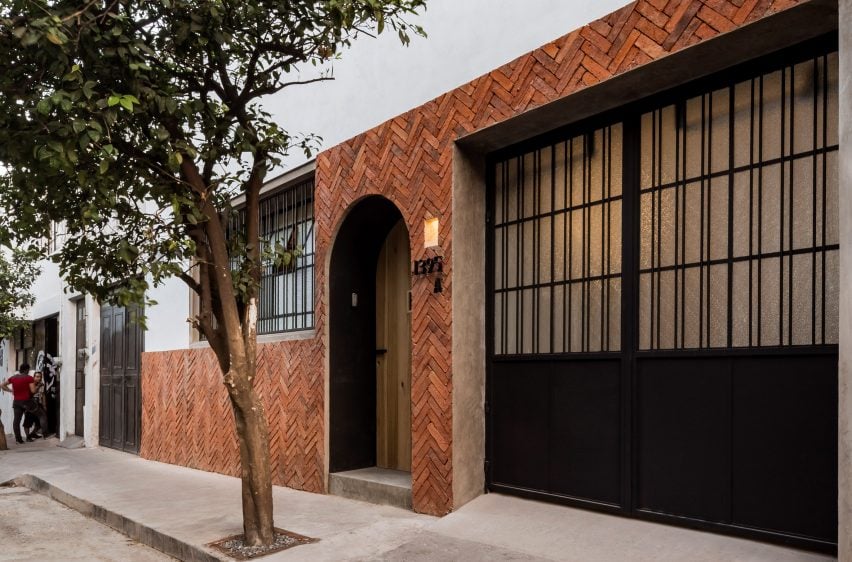Architect Delfino Lozano has modernised a house in the Mexican city of Guadalajara by rearranging the living spaces so they look onto a pair of brick-paved courtyards.
Lozano worked closely with the property's owners to reorganise the house, located in a central suburb of Guadalajara near the neo-gothic Templo Expiatorio cathedral, to create light spaces for their family.
The unassuming building is nestled within a densely packed residential neighbourhood on a plot that extends back from the street and is hemmed in by other buildings.
This typical urban setting necessitated an intelligent strategy to ensure interior spaces receive sufficient daylight.
"The basis of the project is marked by the combination of elements: a central and rear patio that mark the way to cross ventilation and naturally illuminated spaces," Delfino explained.
The arrangement of the interior around this pair of patio spaces allows the surrounding rooms to incorporate windows that provide light and air.
Porthole-like circular roof lights and clerestory windows ensure the spaces that don't look directly onto the outdoors also feel bright and airy.
The design seeks to preserve many of the building's original features and to maintain consistency with the traditional architecture of the area.
The frontage is partially clad in bricks that extend around an arched doorway – a motif that is repeated throughout the interior spaces.
A whitewashed double-height corridor extends between a workshop on one side and a garage on the other and leads towards the first of the two patios.
A door set into a decorative glass screen opens into the courtyard, which is also accessible from a bedroom to one side with a decorative frieze above the door.
The smaller of the two outdoor spaces is flanked on one side by a rough, plastered boundary wall from which the house's original fountain protrudes.
The patio extends beyond the bedroom and its en-suite bathroom towards the main communal areas at the rear of the house. These spaces incorporate details such as tiled floors and timber joinery that reference the region's traditional buildings.
The kitchen is lined on one side with folding screens that open onto the second courtyard, which is partly sheltered beneath an overhanging section of the tiled roof.
The patio serves as an extension of the surrounding internal spaces and also contains a staircase that ascends to a studio on the upper storey.
Areas of flat roof outside the studio are configured as a set of stepped terraces that provide additional outdoor space overlooking the patios below.
Lozano's previous projects include a house with a games room contained in an elevated brick box, and a property he refurbished using standard materials and clever space-saving solutions.
Photography is by César Béjar.

